Attractions
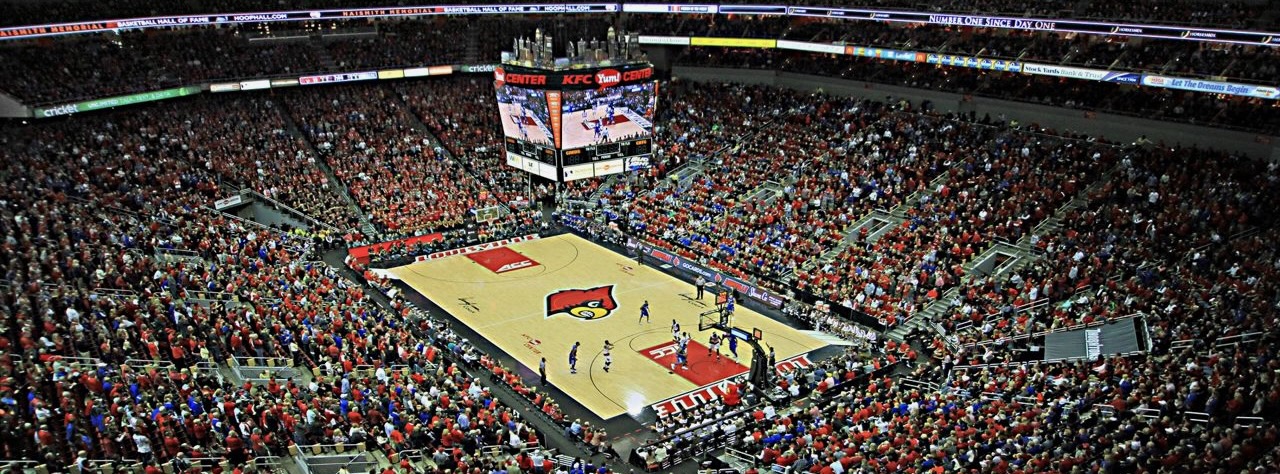
| Route 66 | Cities | Beaches |
Attractions |
 |
| Getting There | Lodging | Restaurants | Attractions |
Louisville is an exciting city. There's a whole two week vacation worth of things to do in and around it, and there's so much variety that there's something for every member of your family or group. If you visit the city every year for a few days each time, it will take you more than a decade to see and do everything. Admittedly, some of the attractions are seasonal. Riding the Belle of Louisville, exploring the Zoo, or visiting the Falls of the Ohio are not Winter options, and attending a game at the Yum Center is only possible in Winter. But the others are good year round. And many of these listings are deceptive. There's more to them than the labels suggest. Churchill Downs the race track also has the Kentucky Derby Museum, which is a half day experience. A play at Actors Theater takes up an evening. The Zoo is a half day. The Bourbon Trail is a whole list of distilleries, museums and tasting rooms. The Louisville Slugger factory includes the museum, and the two of them require at least half a day. The Kentucky Science Center requires half a day. The museums are extensive and require half a day each. A riverboat cruise takes from two hours to a whole evening. |
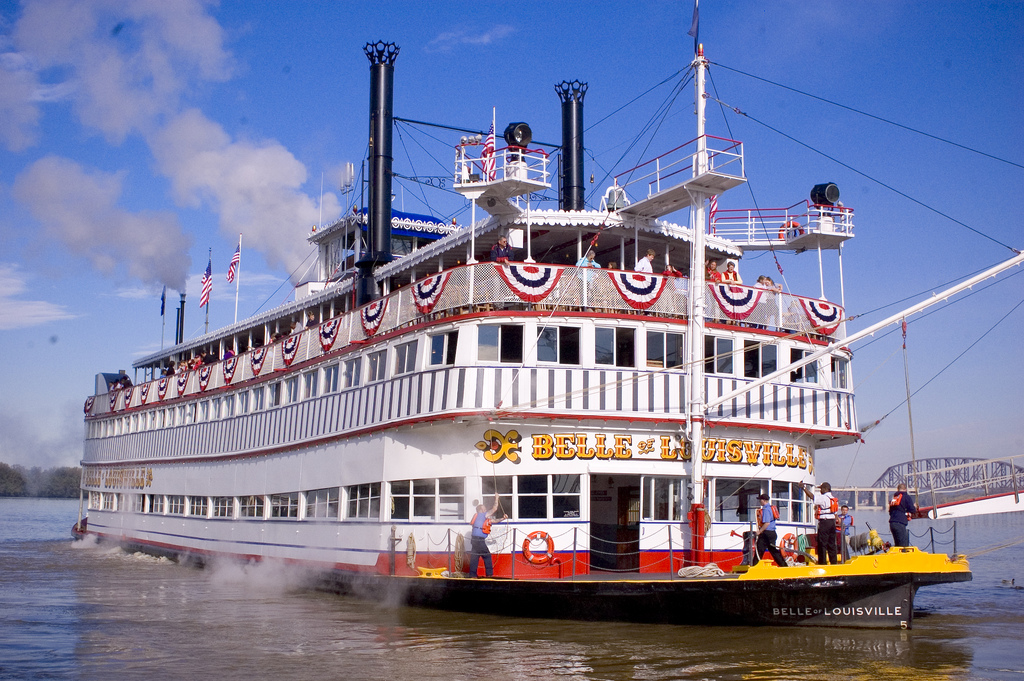 |
| Actors Theater | Belle Of Louisville | Churchill Downs | Falls Of The Ohio | Fourth Street | Frazier History Center |
| Glassworks | Kentucky Science Center | KFC Yum Center | KMAC | Louisville Slugger |
| Muhammad Ali Center | Old Forester Distillery | Speed Art Museum | Symphony | Zoo |
|
Actors Theatre is designated as the State Theater of Kentucky. It has an annual attendance of 150,000. The theatre presents 400 performances annually, including classics and contemporary work, holiday plays, a series of free theatrical events produced by the Professional Training Company, and the Humana Festival of New American Plays. The Theater also supports a professional training company and reaches out to provide student experiences in the Louisville area. Actors Theater has won a long list of national awards for its many productions and its outreach programs. Its acting troupe has performed in 29 cities and 15 countries. It has become famous for the number of new plays performed which received critical acclaim and were picked up by major theaters on Broadway and elsewhere. In all, Actors Theater has added 450 plays to the national drama catalogue. In October 1972, the theater relocated to the newly renovated Old Bank of Louisville building on Main Street, where it remains to this day. The building that became Actors Theatre was a merging of two buildings: the 1837 Old Bank of Louisville, which is a national historic landmark, and the Myers-Thompson Building. In 2004 the theatre acquired a production studio at 9th and Magnolia Streets. The Theater features seating in the round. Because they present so many performances, over any 3-4 day visit you are almost certain to have a play available to attend. |
The Belle of Louisville is a paddlewheel riverboat owned by the city of Louisville and moored at the wharf next to Riverfront Plaza. She is the most widely traveled river steamboat in American history, and is a National Historic Landmark. Originally named the Idlewild, she was built in Pittsburgh and ran between there and Memphis as a passenger ship while hauling cotton, lumber and grain on her lower deck. For a while she was outfitted with front railings to push barges. She was sold and renamed The Avalon, running on the Ohio, Mississippi, Missouri Cumberland, Kanawha and Tennessee Rivers, serving Pittsburgh, Cincinnati, St. Louis, Omaha, Minneapolis, Charleston, Nashville, Knoxville, and even Stillwater, Oklahoma. But by 1960 railroads and highways had drawn passengers away and the boat was put up for sale. Louisville bought it for $34,000, spent $20,000 refurbishing it and renamed it the Belle. Marine architect Alan Bates supervised the refurbishing, which had to be done carefully so as to preserve all the historic details. Since 1963 the Belle has carried passengers on day cruises, lunch cruises, dinner cruises and occasional overnight trips to Cincinnati. She participates in the Great Steamboat Race on the Wednesday before the Derby. The winner receives the Golden Anters, which are displayed until the following year's race. |
|
 |
The Kentucky Derby Museum at Churchill Downs celebrates not only the Kentucky Derby but the entire horseracing industry. Each year, it welcomes over 240,000 visitors from across the U.S. and around the world. Visitors enjoy two floors of interactive exhibits, a guided historic walking tour of the racetrack, and an18-minute movie, “The Greatest Race” on a 360°, 4K high-resolution screen. Exhibits tell the story of how the Kentucky Derby got its start in 1875. Displayed are unique artifacts ranging from early fashion pieces to winning Hall of Fame trainer D. Wayne Lukas’ trophies and artwork. The Derby Café offers a modern take on some of Kentucky’s signature dishes, including a Hot Brown Panini, Burgoo, and Bourbon Bread Pudding. The bar offers Mint Juleps, bourbon flights, and other drinks. Visitors can choose additional options like a visit to Millionaire's Row and the barns where the horses live and train. |
The Falls of the Ohio are the reason for Louisville's existence. The only falls on the Ohio or Mississippi, the 26 ft. drop entirely blocked river traffic. So passengers and cargo had to be unloaded, transported around, and reloaded onto boats on the other side. Restaurants, hotels, and wagons had to be provided, so the town, then the city, grew here. Eventually, a canal and series of locks were built to allow boats to navigate around the Falls. These are on the Louisville side of the river and there's a Visitor Center. However, the Falls are important for another reason. The rocks contain some of finest fossil beds in North America. The fossils are from the Devonian Period. A state park on the Indiana side protects the beds and provides a Visitor Center to explain them. The park attracts 160,000 visitors annually, including many school groups. There's also a museum, which in addition to the fossils covers Native American and early Colonial history. Among other details George Rogers Clark lived in a cabin along the riverbank and he and Meriwether Lewis met there to plan their famous Lewis & Clark Expedition. Even though it's across the river, in good weather this is a spectacular park and well worth at least half a day. |
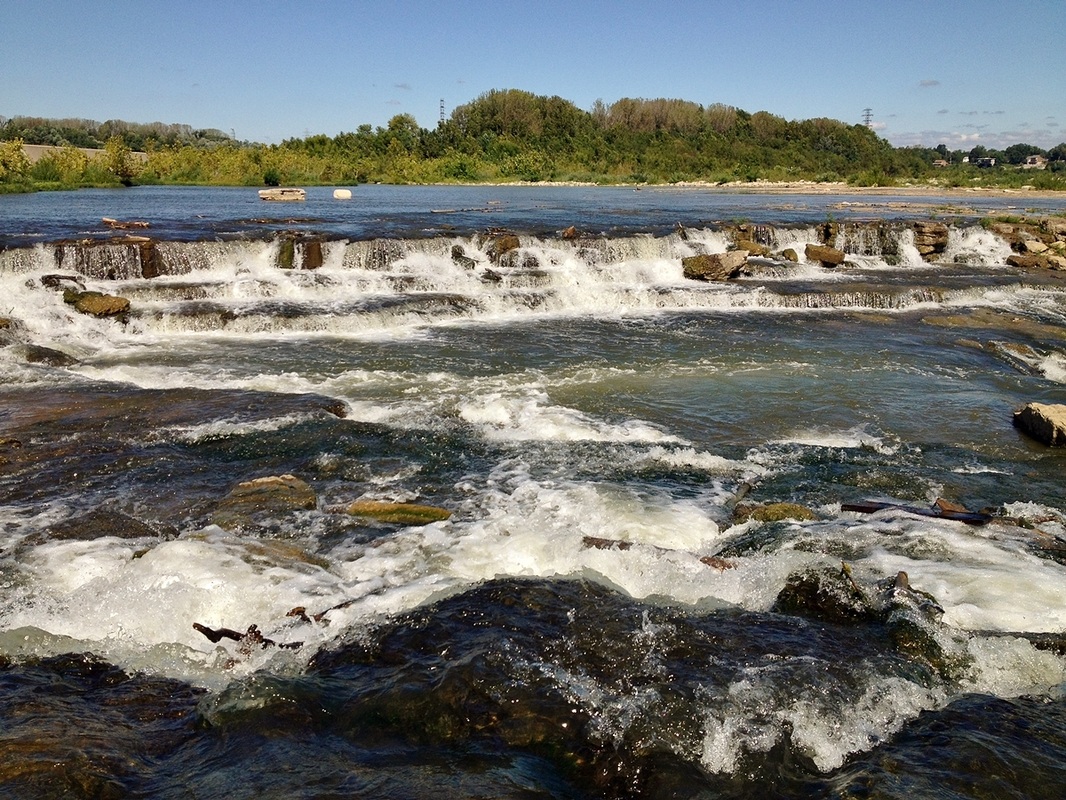 |
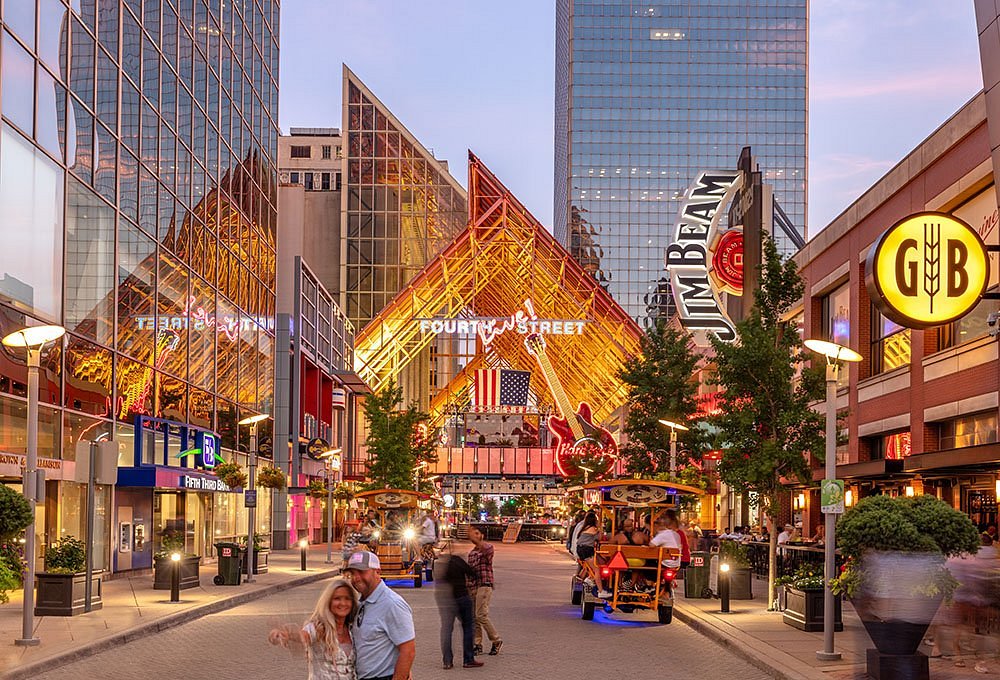 |
Fourth Street is the heart of Louisville. Since 2000 the core of Fourth Street has been closed to traffic and functions as a pedestrian mall. Fourth Street Live is a 350,000 square foot entertainment and retail complex. For two decades it was a popular venue, especially on weekends, when major individuals and groups played here. It attracted restaurants, bars and stores. But the Pandemic devastated Fourth Street. Since people were not allowed to congregate, most of the businesses closed and the entire street was sbandoned for two years. Now, with the Pandemic over, it's coming back, but it will take a while. However, Fourth Street is famous for something else --- it was the heart of the Civil Rights Movement in the 1960s. White owned restaurants and businesses either excluded African Americans or treated them differently, such as setting aside separate seating in theaters, or not allowing them to sit at lunch counters or try on clothes. Louisville teenagers in 1961staged sit ins and voter registration drives to force passage of the South's first Public Accomodations Law. Today, historical markers honor those students and their protests at Kaufmans, Stewarts, Walgreens, the Brown and other businesses. |
The Feazier Historical Center is located on Museum Row on West Main Street. It was originally a military museum so has especially strong collections of weapons and other military related items. For example, it has the world's largest collection of toy soldiers and miniatures, one of America's largest collections of antique weapons, and an extensive collection of European weapons. Since expanding its scope to a comprehensive museum, the Frazier covers many other topics. It is now the center of the Bourbon Trail and the study of the U.S. Bourbon industry. The building itself is an architectural gem and the space between it and a neighboring building has been developed into a classy urban garden. |
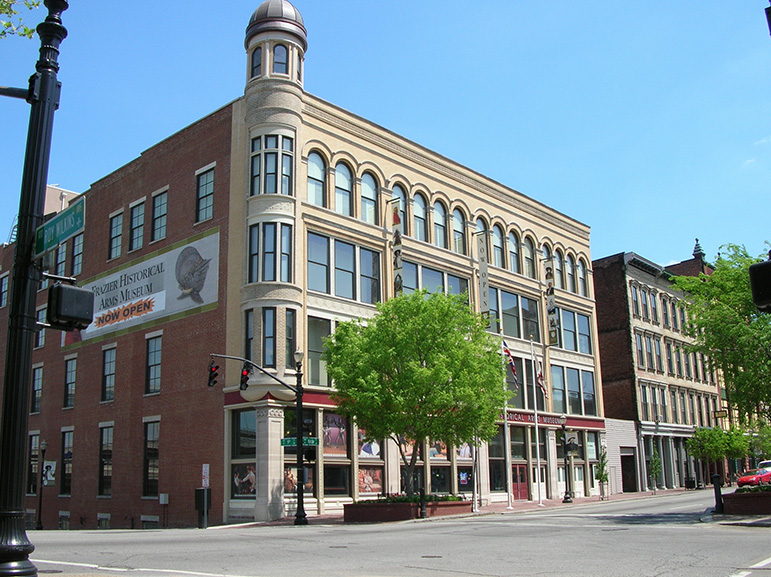 |
|
The Kentucky Science Center is at 727 West Main Street. It's a four story limestone building with a cast iron facade, originally built in 1878 as a warehouse, plus the adjacent five story Alexander Building. It's a big facility at 187,000 square feet and draws 550,000 visitors yearly, although the large number of school and youth groups inflates this. It has six sections and a special hands on area. Science facilities include four fully equipped science labs. The Center features a four story digital theater, a four story pendulum and lots and lots of hands on displays. This all sounds appealing, but it may be one you can skip. All of its displays are geared to younger kids, so teenagers will be bored. The admission prices are pretty steep for what you get. There is not enough staff to keep up with the erowds of young kids so there are many kids running around unsupervised. Of all the major city science centers, this is the weakest, and of all the downtown Louisville attractions, it's the weakest. |
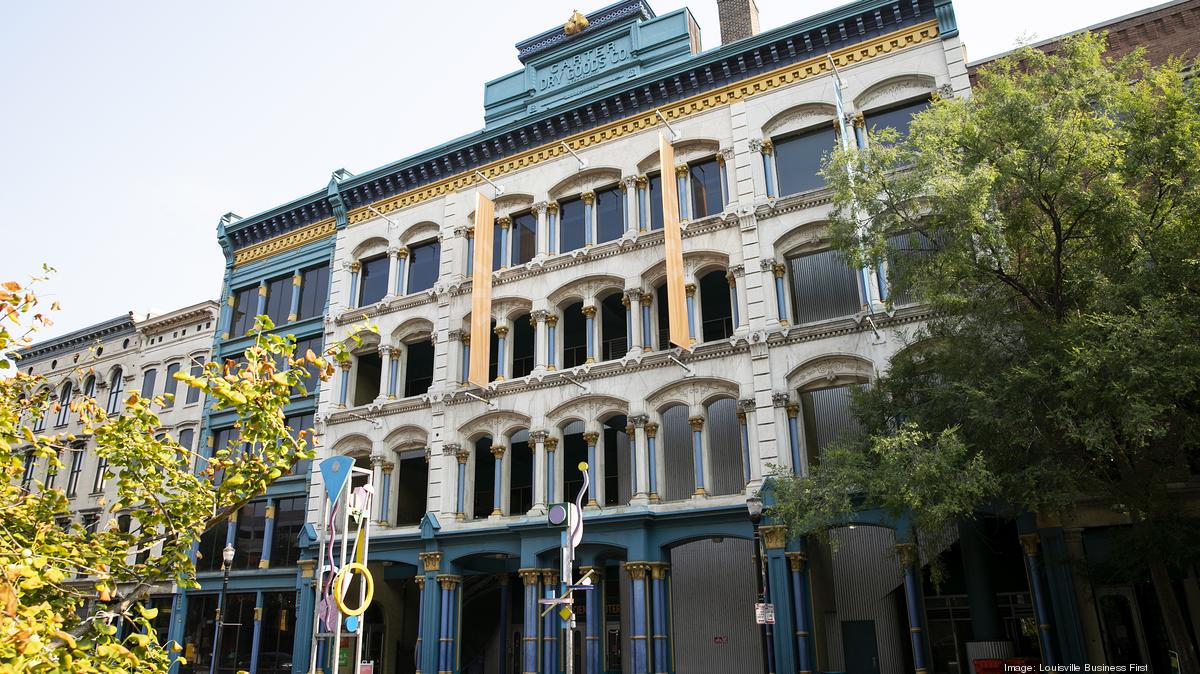 |
|
The KFC Yum Center is Louisville's downtown multi-purpose event center. Adjacent to the riverfront, it is located on Main Street between 2nd and 3rd Streets and opened on October 10, 2010. The arena is part of a $450 million project that includes a 975-car parking structure and floodwall. The University of Louisville basketball teams are the primary tenants, and the NCAA uses it for regional tournaments in March. With 22,090 seats for basketball, it is the largest arena in the United States designed primarily for basketball and second largest used for basketball, behind the Syracuse Carrier Dome. The arena's current game attendance record is 22,815, set March 9, 2013, against Notre Dame. Metallica performed a concert here in March 9, 2019 before 23,085. |
| The Kentucky Museum of Arts and Crafts is one of America's largest museums focusing entirely on Folk Art. It's downtown on Museum Row (West Main Street). The permanent collections feature Kentucky and Southern Folk Art, but they bring in travelling exhibitions like the recent Picasso collection. This is not a large museum and is a bit eccentric but is worth a visit. The building itself is one of a block of 1890s cast iron buildings, the largest intact set of such buildings remaining anywhere in the country. | 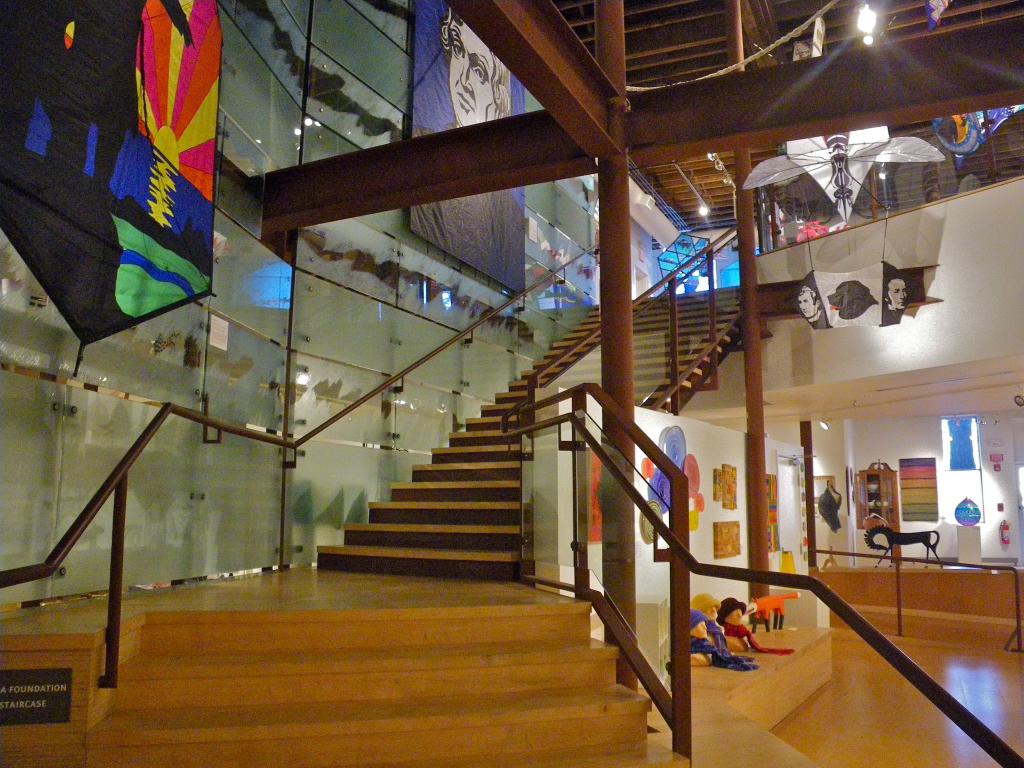 |
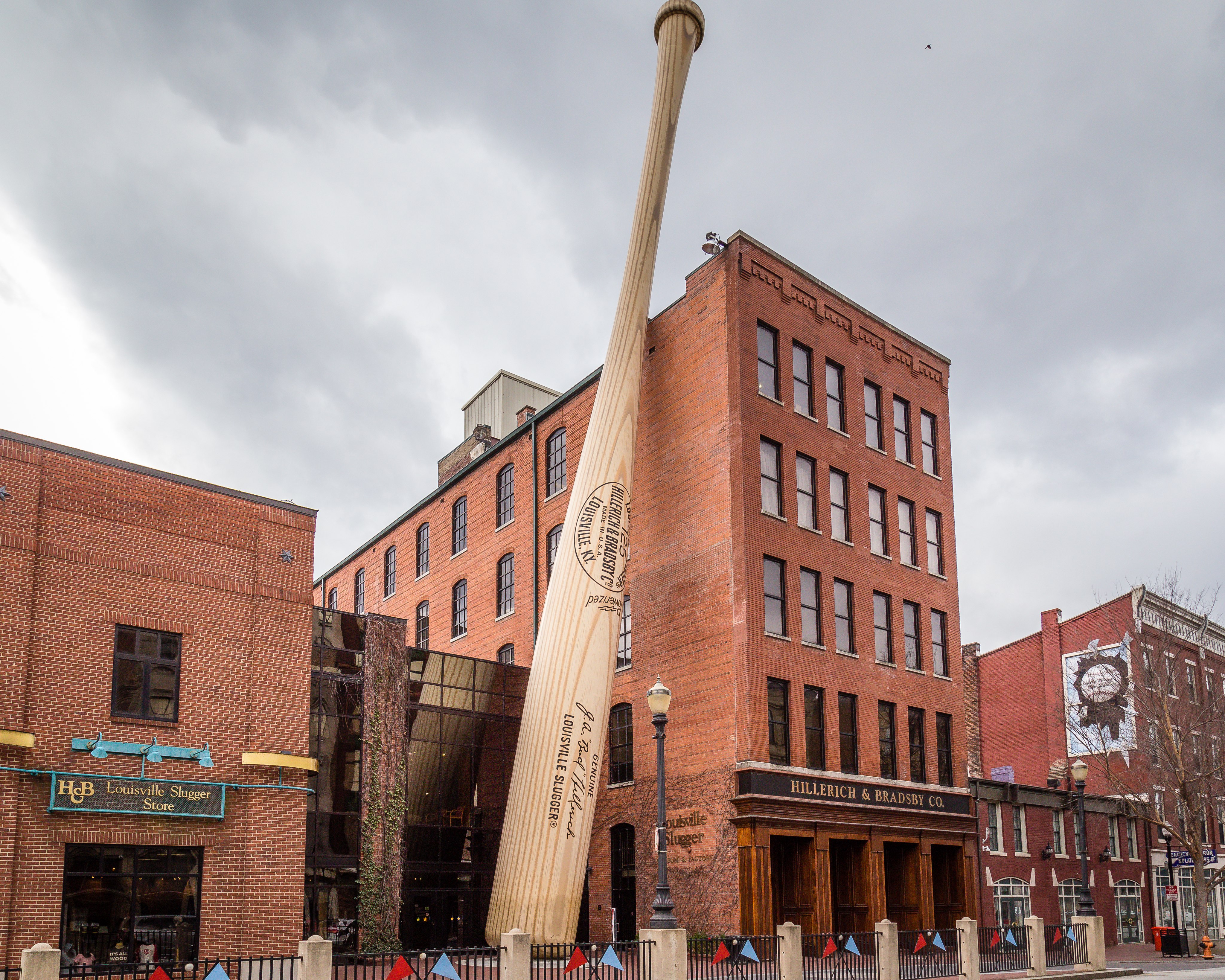 |
The Louisville Slugger Factory & Museum on West Main Street showcases the baseball bat and its role in American history, literature and culture. The Louisville Slugger, of course, is the greatest baseball bat ever made, and has been and still is the official bat of the major leagues. This is a half day experience. There's a movie, the factory tour, a store, and some hands on activities. Both the tour and the museum are very well done. For kids and baseball lovers, this will be the highlight of your Louisville visit. But even if you're neither, it's still fascinating to see the industrial process by which they produce the famous bat. You get to hold the personal bats of Babe Ruth, Roberto Clemente, Hank Aaron, Mickey Mantle, Pete Rose, Johnny Bench, Cal Ripken and other stars. Professional baseball players even come here to pick up personalized bats with their names woodburned into them. Getting to try your luck in the batting cages is a unique opportunity. Due to high demand, we urge you to make tour reservations well ahead of time. |
| The Muhammad Ali Center is a museum and cultural center dedicated to boxer Cassius Clay (Muhammad Ali). The six story, 97,000 square feet facility is on West Main Street. It features exhibits tracing Ali's life, a boxing ring, a theater showing the film The Greatest, and film clips of Ali's greatest fights. Even if you're not a boxing fan, this is worth a visit because Ali interjected himself into most of the issues of his time, especially Civil Rights and the Vietnam War, and there are parts of the museum focusing on these. But from the time he burst onto the national scene by winning a gold medal at the Olympics to his death from Parkinson's Disease, Ali was a Louisville icon with a huge following, especially among the city's minority population. | 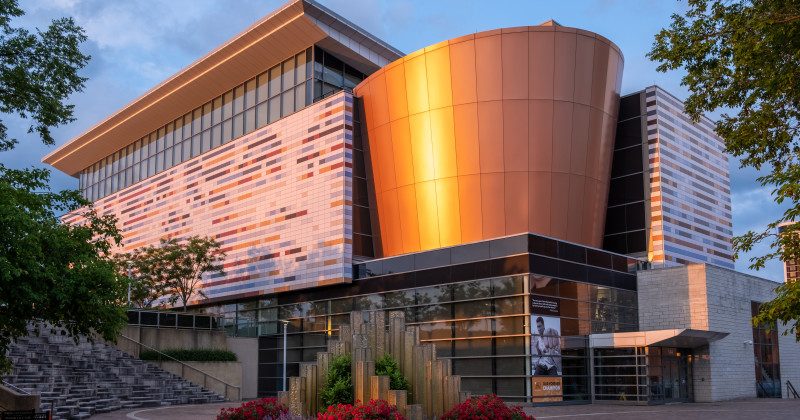 |
|
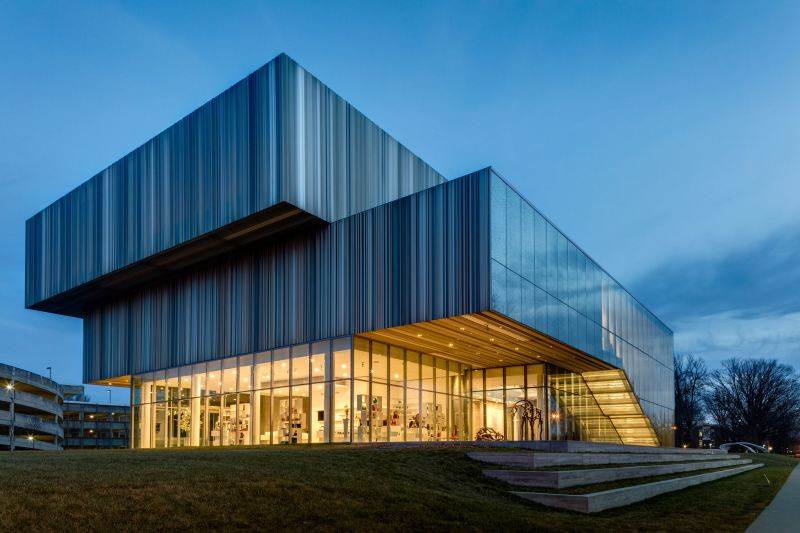 |
The Speed Art Museum is the oldest and largest art museum in Kentucky and averages 180,000 visitors each year. It houses ancient, classical and modern art from around the world. Its collections of Dutch, French and Italian paintings plus modern art and sculptures are nationally ranked. It's at 2035 South Third Street and includes a cafe, theater and store. TARC, Louisville's metro bus system, runs directly from downtown and stops in front of the Speed. If you drive, there's a parking garage next door. |
| The Louisville Orchestra performs at Whitney Hall in the Kentucky Center for the Arts and in the Brown Theater during three seasons and at the Louisville Zoo in Summers. It is widely known for its commission of new music, and in its current season is playing more than 100 performances in five different concert series. It plays the classics, pop music, previously unperformed music, film sound tracks, and even music specifically for children. Most of its concerts are on weekends. At its peak the Louisville Orchestra had 72 full time professionals but it now has 60. It brings in guests musicians for a year at a time to enhance its ranks. Whitney Hall (photo, left) seats 2,479 on West Main Street. Harkening back to the glory days of Louisville's theater district, the Brown Theatre is a lavish, lovingly restored showplace. State-of-the-art technology combines with Old World splendor to create a theater as beautiful to look at as it is comfortable to sit in. Seating approximately 1,400 patrons, the Brown stands today as the Grand Dame of Louisville's artistic community. | 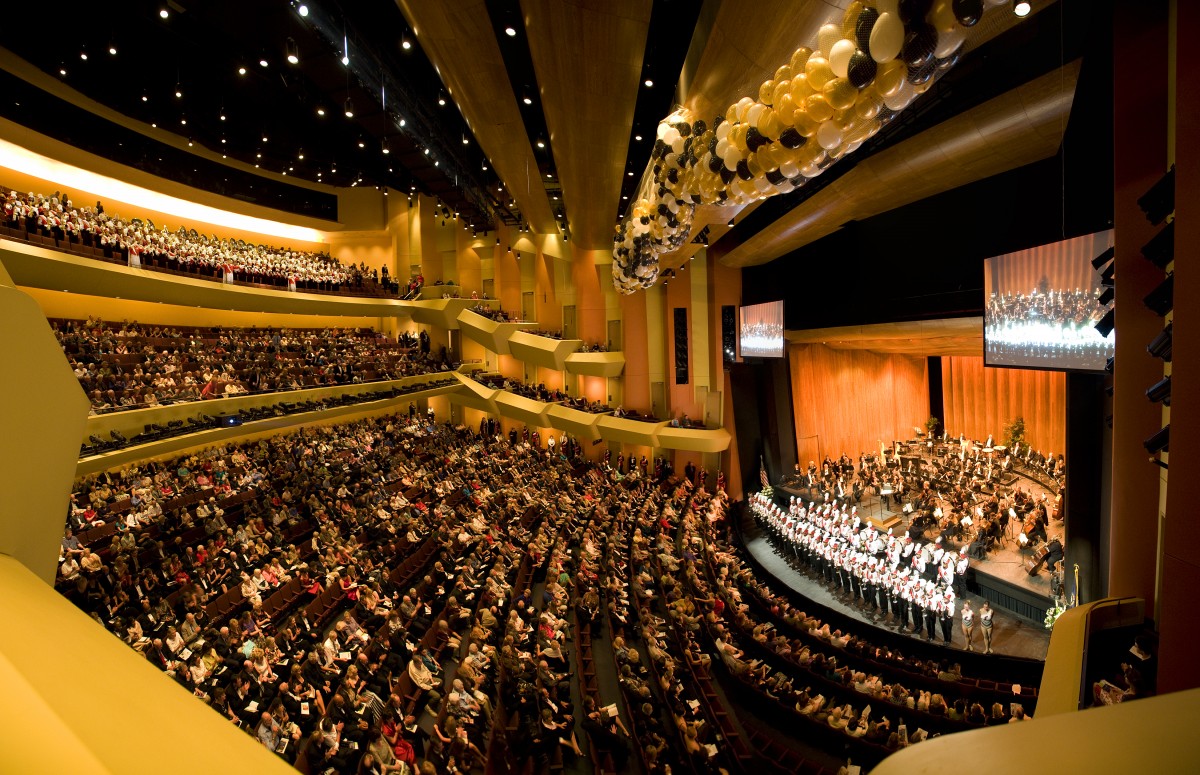 |
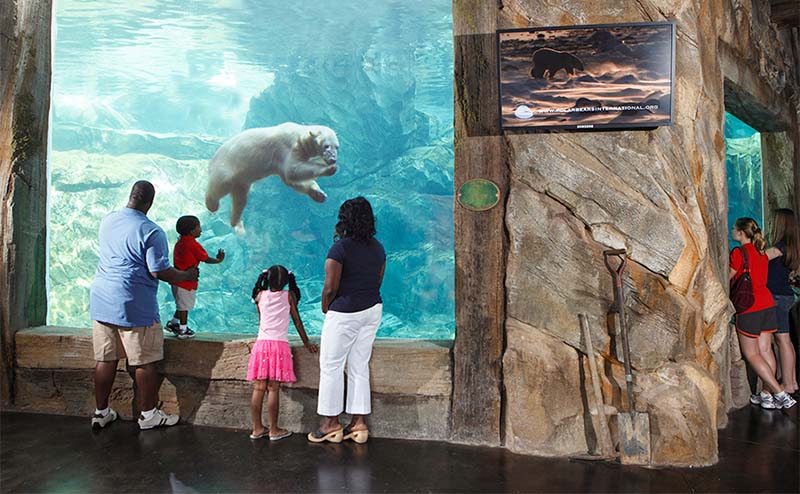 |
The Louisville Zoo, The State Zoo of Kentucky, is a 134 acre facility with over 1700 animals. The Zoo attracts 900,000 visitors a year. The Louisville Zoo has been nationally recognized for its Gorilla, Reptile, Cat, Polar Bear and Penguin collections. It has notable Australian, and South American exhibits. Its important collections include a nine foot long Albino Alligator, six Veiled Chameleons, four Orangutans, two Giant Tortoises and three Komoda Dragons, the closest animal we have living today to the actual Dinosaurs. The Australian collection includes the Tawny Frogmouth, a very large owl like bird, Wallaroos and Wallabies. Kids enjoy the Dwarf Goats but are usually afraid of the Giant Grizzlies. The Louisville Zoo is an active participant in various programs to protect endangered species and in addition to its 12 Golden Frogs and 40 Vampire Bats has six Black Footed Ferrets. Its female Python is the only one in the world in captivity to give birth (to six pythettes) with no male parent. She thus cloned herself. Herpetologists have known snakes could do this, but it had never happened in captivity. |
| Whether you're a Bourbon connoisseur, someone into history or science, or just a tourist who wants to sample authentic Kentucky, the Kentucky Bourbon Trail with its tours, tastings and other experiences will enrich your visit to Louisville. The entire Trail includes 41 distilleries, mostly spread between Louisville and Lexington. The official headquarters is the Frazier History Center on West Main Street. You'll pick up your map and guide there. But just beyond the Frazier is Whiskey Row, a set of four major distilleries all on West Main : Angel's Envy, Old Forester, Evan Williams and Michter's. You'll learn how Bourbon is made, about its history back to the 1700s, how to taste and evaluate it, and how its chemistry is so unique Kentucky universities offer degrees in it. Each tour will take about 90 minutes. Doing all four is worth it as they're all slightly different, but if you only have time for one do Old Forester, four floors of Bourbon education. If you have time for two, add Angel's Envy. | 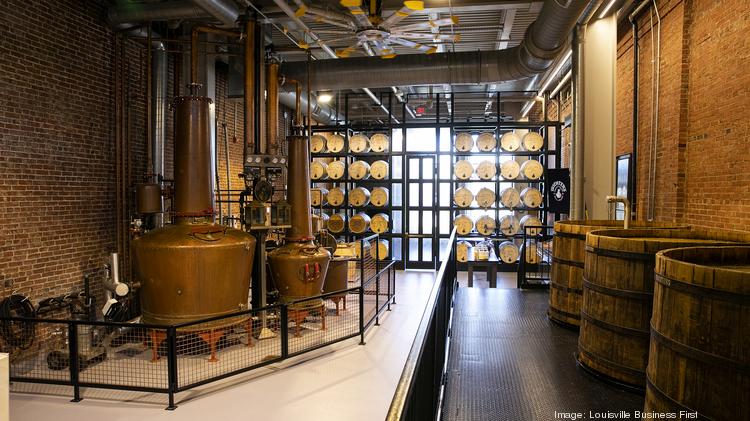 |
|
|||
|